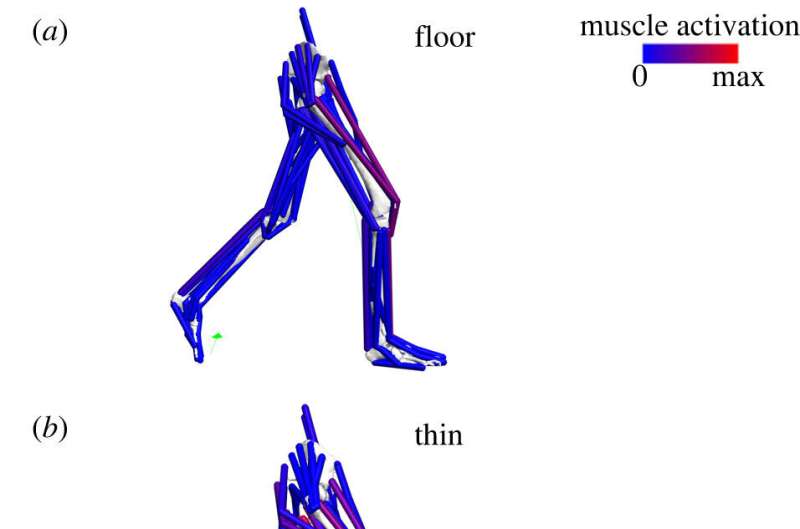December 1, 2022 report
Why walking on deforming surfaces uses more energy

A team of researchers at the University of Liverpool's Institute of Life Course & Medical Sciences, working with a colleague from Liverpool John Moores University, has discovered why people use more energy when walking on surfaces that deform (such as sand) than on hard, cement-like surfaces. In their study, published in Journal of the Royal Society Interface, the group studied the behavior of muscles in the legs, feet and toes of volunteers walking on varied surfaces.
Prior research and anecdotal evidence suggest that walking in sand, or even across a dirt-covered lot, takes a lot more work than walking down a sidewalk or across a parking lot. The difference is in the deformity of the material below our feet. But why, exactly, do surfaces that deform more require so much more exertion? To find the answer, the researchers recruited 30 volunteers who walked on three surfaces as their movements, oxygen intake and muscles were recorded by sensors in the lab.
The first of the surfaces was a hard floor. The second was a thin foam mat, and the third a thick foam mat. Each volunteer walked back and forth across each surface for seven minutes. The researchers used data from the exercises to create simulations representing the average person walking across each type of surface.
The researchers found that when walking on a deformable surface, people take longer strides, which in turn leads to increased energy use by muscles in the hips and knees. And that was it. They suggest their study disproves previous theories regarding the problem. One of the most common theories suggested the increase in energy use was due to interruptions in the pendulum motions that arise as people walk or run. The researchers found no such interruptions.
They also suggest that there may be more to the problem than they observed and plan to continue their work, perhaps extending it to other animals.
More information: Barbara Grant et al, Why does the metabolic cost of walking increase on compliant substrates?, Journal of The Royal Society Interface (2022). DOI: 10.1098/rsif.2022.0483
Journal information: Journal of the Royal Society Interface
© 2022 Science X Network




















